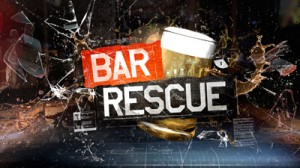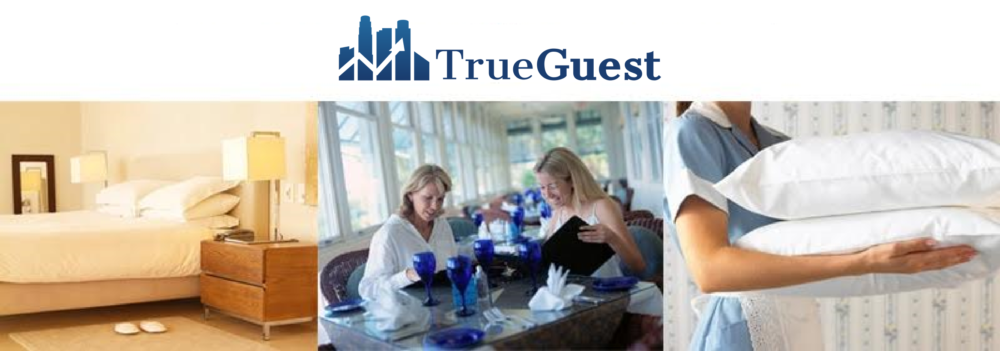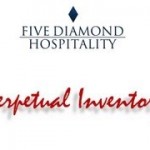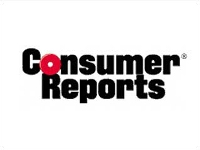 If you run a bar, or just love bars, be sure to check out season two of Bar Rescue tonight on Spike TV. Here is a preview of the season:
If you run a bar, or just love bars, be sure to check out season two of Bar Rescue tonight on Spike TV. Here is a preview of the season:
Jon Taffer Is Back for a Second Round
Get More: Jon Taffer Is Back for a Second Round

 If you run a bar, or just love bars, be sure to check out season two of Bar Rescue tonight on Spike TV. Here is a preview of the season:
If you run a bar, or just love bars, be sure to check out season two of Bar Rescue tonight on Spike TV. Here is a preview of the season:
Jon Taffer Is Back for a Second Round
Get More: Jon Taffer Is Back for a Second Round
Dear TrueGuest,
I just finished your online guide to ‘Getting Your Beverage Cost Under Budget‘ and I am working on getting all of the internal controls in place. However, I really feel like I am now spending all of my time chasing pennies and trying to control every single drop of liquor we use. Should I really care how much alcohol is wasted? A little bit of extra vodka here and there shouldn’t make a big difference, right? – Javier
Javier, thank you for such a great question! We often hear this exact question when we are teaching our liquor control class in person or giving a lecture on liquor controls at an HFTP meeting. You are absolutely right, even an ounce of a really good vodka only costs about 50 cents. Why worry so much? Surely, that can’t impact the bottom line that much, right? Wrong!
First, we have to start looking at the potential of that ounce of vodka, not the cost. In many cities such as Los Angeles and New York City, an ounce of premium vodka at a high-end bar can easily sell for $15. So, for every extra ounce of vodka your bartender over-pours, you could be out $15 in potential revenue. Most guests have a pretty small limit of how much alcohol they can consume in one night. Let’s pretend a customer orders a vodka cranberry but your bartender pours 2 ounces of vodka instead of 1 ounce. That customer has now had twice as much as she expected to drink and may not come back for a second one. If that customer typically likes to drink two drinks, your hotel will be out $15 in revenue and $14.50 in profit. Over-pouring is definitely a profit killer in hotel bars. If you have just 50 customers a night and just 10 of them have one less drink because of the over-pour, you could be out over $140 in profit. If you serve a few hundred guests, you can easily see how quickly the numbers add up.
I hope that helps. Once you get your liquor controls in line, be sure to check out our post on maximizing bar revenues.
Starting at the end of 2011, Four Seasons will offer 15-minute Room Service in all of their hotels (20 minutes in some locations with kitchens not easily accessible). From the Four Seasons press release:
“Whether needing to quickly replenish after a workout or wanting to toast the perfect sunset, 15-Minute Room Service provides quick and delicious meals for those who want it right away,” says Christopher Hunsberger, executive vice president, global product and innovation at Four Seasons Hotels and Resorts. “It’s also ideal for those who are on the go. Ideally, every meal would be enjoyed at leisure, but at times we really just need to grab a bite quickly – and there’s no reason that it can’t be freshly-made with quality ingredients, and entirely delicious.”
One of the biggest areas of struggle during our Service Experience Audits is the use of the guest name. The use of the guest name is one of the most important tools you have to build loyalty with your guests. Rather than providing your associates with general instructions such as ‘use the guest’s name during every interaction’, focus on the key areas of when the name should be used. Our method is simple but very effective.
Use the guest’s name once to open the conversation and once to close the conversation.
By doing this, it will become second nature to your associates. They won’t even have to think about using the guest’s name. They will just do it.
Here are some examples for a few departments on how to use the guest name:
Phone Calls: As soon as the phone rings, the PBX operator should pull up the guest’s information on the computer and get ready to use the name. The PBX operator should immediately greet the guest by name. After handling the call, the operator should end the call by using the guest name.
Check In & Check Out: As soon as the guest gives the name or room number, the GSA should immediately use the name once. The GSA should close the conversation with “have a great stay, Mr. Smith.”
In Room Dining: The server should double check the name just prior to knocking on the door. Once the analyst opens the door and invites them in, the server should greet the guest by name. Then once the guest signs the check, the server should thank the analyst by name on their way out of the room.
Housekeeping & Engineering: The associates should double check the name just prior to knocking on the door. Once the analyst opens the door and invites them in, the server should greet the guest by name. To close the conversation, the associate should say something like “enjoy the rest of your stay, Mr. Smith.”
The real key to the successful use of the guest name is repetition. If you require all associates to use the name once during the greeting and once during the closing it is very easy to monitor and it won’t be long until everyone on your team is using guest names.

Spike TV has a new reality TV show called Bar Rescue. Bar Consultant Jon Taffer and his team take over bars on the verge of bankruptcy and turn them around. In addition to remodeling the bar, he gets the management and staff on the right track to running a successful bar. He covers everything such as managing your pour cost, menu engineering, up-selling, even why proper uniforms are important. Of course, like any good reality TV show, Bar Rescue is built around the drama that comes from running a bar.
Check out this clip below. John talks about the perfect one-ounce pour, the power of suggestion, bar menu engineering, and why selling fruit drinks helps promote food sales.
♦
Bar Rescue airs on Spike on Sunday but they rerun episodes often. Also, many clips and some full episodes are available on Spike’s website. Check out this clip and meet John Taffer, the star of Bar Rescue.
♦
♦
Dear TrueGuest,
At my hotel, we have a very busy breakfast buffet (especially on the weekends). Our hosts do a good job of seating guests in a timely manner but don’t add too much to our overall guest service. What can you recommend?
Good question. We often see hosts do a poor job on guest service. Often they just stand behind the desk and wait for guests to approach them and then walk them to a table. Then they go back to checking their text messages on their iPhone.
1. First, be sure to check out our Breakfast Buffet Training Guide. There is a great video on basic service steps
2. The first goal of every host should be to greet every arriving guest with a warm smile and a ‘Good Morning’. Also, they should make sure to greet every departing guest with a warm smile and a sincere thank you.
3. Hosts must know how to greet multiple guests at the same time. Often when two parties arrive in the restaurant at the same time, the host will greet the first party and escort them to the table without saying a word to the second party. The host must let the second party know that he/she will be back in a minute to seat them.
4. When escorting guests to a table, the host should make sure to point out the buffet. The goal is to get the guest excited about the breakfast they are about to have. Make sure to be excited about the buffet and mention some of the great things such as the omelet chef.
5. When the guest arrives at the table, the host must hand each guest a menu after they are seated. Do not just place the menu on the table and walk away!
6. Have the host introduce the server with a phrase such as ‘John will be taking care of you this morning and will be right over to offer you coffee and juice’.
7. Finally, make sure the host closes the conversation. We often just see hosts walk away from the table without saying anything. Have the host at least say ‘have a great breakfast!’
Have any tips of your own? Post them below! Have a question that you would like answered? Post it below or send it to us via the contact page.
 Training Video Goal: Successful implementation of perpetual beverage inventory by providing instructions and necessary tools
Training Video Goal: Successful implementation of perpetual beverage inventory by providing instructions and necessary tools
Training Video Length: Approximately 10 Minutes, Video can be paused and replayed at the viewer’s chosen speed
Training Video Audience: All Food and Beverage Managers implementing a perpetual beverage inventory system
This video takes approximately 1 minute to load and will automatically play once loaded. For your convenience, all templates and instructions that are mentioned in the video are available free for download on this page below the video.
To download the Perpetual Beverage Inventory Template in Excel Format, click here.
To download the Perpetual Beverage Inventory Template instructions in PDF format, click here.
To read an article on Perpetual Beverage Inventory, click here.
To download the free Banquet Bar Requisition Template in Excel format, click here
To download the Banquet Bar Requisition Template instructions in PDF format, click here
 Dear TrueGuest,
Dear TrueGuest,
I can’t seem to get our liquor costs under budget. What is the best control for measuring the bartender’s pours?
Good question! There are a few different methods for pouring alcohol such as free pour, jigger, or measured spout. Which one works best depends on your bar.
Typical lobby lounge – If your bar is typically slow, usually a measured jigger works best. Just be sure to have plenty of jiggers on hand so the bartender always has one within reach. We like the measured jigger because it is easy for your supervisors to monitor from across the bar. Also, customers are accepting of a jigger in most cases. Of course, the downside is that it is easy for the bartender to overpour using the jigger. Most bartenders we see using a jigger like to run a tail with each pour. Here is a good video on basic jigger techniques:
High volume bar – If your bar gets pretty busy and the bartenders need to crank out drinks fast, we like the measured spout. The ball bearings in the spout automatically pour the exact amount and then stop. The bartender would have to tilt the bottle back a second time to be able to overpour with these spouts. Here is a good video of how the Precision Pours work:
Free Pouring Method – We really do not like any bars to use the free pour method. It is both dangerous to your profits and to your customers. Our mystery shoppers have reported time after time instances where they were poured a drink that had over 4 ounces of alcohol when a bartender free poured. You can easily see how pouring 3 times the correct amount can be very dangerous. But if you must free pour, at least have a good counting system in place and a system to test the bartender’s pouring skills. Here is a good video:
Dear TrueGuest,
I am the In-Room Dining Manager of a large hotel. Our In-Room Dining sales have really dropped over the last year. Our service scores are also suffering. Where do a start?
Great question! Many hotels are reporting a drastic decrease in F&B sales per occupied room. The In-Room Dining sales have taken the biggest hit during these tough times. Guests are really cutting back on the more expensive amenities of the hotels and room service is usually at the top. Here are our recommendations:
1. Revisit your menu and specifically your menu prices. Many hotels dramatically increased their room service menu prices over the restaurant prices. We recommend that the prices are similar, especially if your hotel is near many other restaurants… especially if they are within walking distance. Guests typically look at the room service prices and assume they are the same as in the restaurant. If a guest feels they are too high, you have lost them as a customer in both room service and the restaurant. Guests will grab breakfast from a quick mart and eat dinner at the restaurant next door.
2. Review the basics of room service selling with your Room Service Operators. Now more than ever, they need to maximize the revenue on every call they receive. Check out this article on how to increase your room service sales by as much as 50 percent!
3. For help on improving your service, check out this article on how to deliver room service orders the right way!
Have any tips of your own? Post them below! Have a question that you would like answered? Post it below or send it to us via the contact page.
In a study of chain restaurants in the July 2009 edition of Consumer Reports, customers reported at least one complaint during a whopping 43 percent of the visits! The complaints reported are very surprising and an area that we should all be focused on improving in our hotel restaurants. 
Here are the top complaints:
Most people would automatically assume that food quality issues would be the top complaint in a restaurant. Keep in mind that this study covered restaurants from Denny’s all the way up to Morton’s Steakhouse. You probably spend a lot of time working on your menu and your food quality. Keep in mind that this is the area that the fewest people complain. Where should you focus most? First, hopefully, your hotel restaurant does not have a noise problem. Very few of the restaurants our mystery shoppers visit have any sort of noise problem. However, many of the hotel restaurants have both a service problem and some cleanliness issues.
Service problems are the biggest problem areas during our mystery shopper’s visits. Surprisingly, the biggest problems are the most basic service standards. Many servers struggle to do basic standards such as taking orders, pre-bussing tables, and delivering the check correctly. Schedule a mystery shop today to see how your service ranks.
We also see a few cleanliness issues during our visits. The main culprits? Buffets and bathrooms. Bathroom cleanliness was also a complaint in the Consumer Reports study. Have a messy bathroom in your restaurant is probably the quickest way to scare a guest. The buffet problems we report are issues such as dirty plates in the plate rack and messes left on the buffet from other guests. Be sure that dishes are inspected after they come out of the dishwasher and before they are put on the buffet. Also, be sure you have someone monitoring the buffet to clean up the mess left by guests who don’t know how to operate a set of tongs.
Keep focused on the basics to improve your guest satisfaction scores!